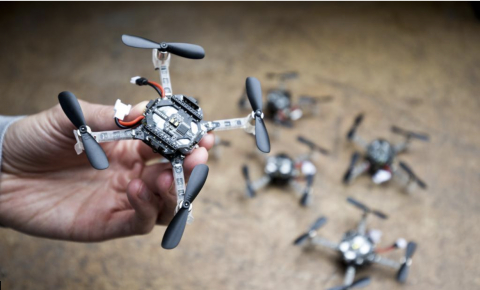Please check the information entered!
- Please check the information entered
A log-in email has been sent to your email address
Forgot password? Reset password
Exploring unknown and hazardous environments always presents a challenge. Burning buildings, for example, are dangerous to navigate, but if there are people trapped inside, it’s a risk our brave rescue teams often have to take.
It’s one of the main reasons why scientists have been increasingly looking at leveraging drones to help explore dangerous places.
But while larger drones are capable of carrying relatively powerful microprocessors and the batteries required to power them, which enables them to follow floorplan maps, they are typically slow and bulky.
That’s why researchers from Delft University of Technology, the University of Liverpool and Radboud University of Nijmegen have been working on developing swarms of tiny drones that can navigate their way through environments without needing to perform complex onboard calculations.
The slender 33g drones – which are equipped with cameras - function like flying insects, avoiding obstacles (including each other) and exploring environments by following the lay of the land as they go.
Powered by a so-called ‘bug algorithm’, the drones were able to successfully enter an office environment and find two dummies that were meant to represent victims in a disaster scenario.
In just six minutes, six of the tiny drones were able to explore 80% of the open rooms; a feat that would have taken one larger drone significantly longer.
When their batteries reached 60%, the drones headed for home, following a radio beacon back to the research team. Once back, the scientists were then able to review video footage captured by the drones’ cameras to see exactly where the dummies were located.
A paper on the research was recently published in the journal Science Robotics.
You can check out the swarm of tiny drones in action in the video below:

Image credit: TU Delft